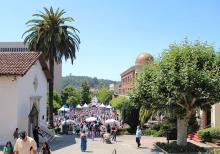Community Networks Borne Out of Covid-19 Continue to Strengthen and Expand
With vaccines rolling out tier by tier, state by state, and restaurants, bars and public spaces starting to reopen one by one, there seems to be a desire to say, “Wow, things are going back to normal!” Unfortunately, the public health crisis exacerbated healthcare, education, and economic inequities that have long existed in low-income and communities of color across the country and have no chance of going away any time soon. But some community leaders have stepped up and come to the table with one piece of the puzzle in bridging these inequities — better Internet access to these communities.
Over the summer, we covered several communities that jumped to action and came up with quick ways to implement long-term solutions.
The city of San Rafael, which sits on the coast of northern California in Marin County, continues to strengthen, expand, and research the use of the network it built over the summer and fall for one unserved area hit hard by the economic, education, and health impact of Covid-19. And on the other side of the country, Meta Mesh in Pittsburgh, Pennsylvania continues construction on a pilot project that is hoping to connect unserved families by the end of this summer.
Focusing on the Future
In San Rafael, California, the city, Marin County and a nonprofit organization — the Canal Alliance — all joined forces to bring free Wi-Fi to the Canal neighborhood.



